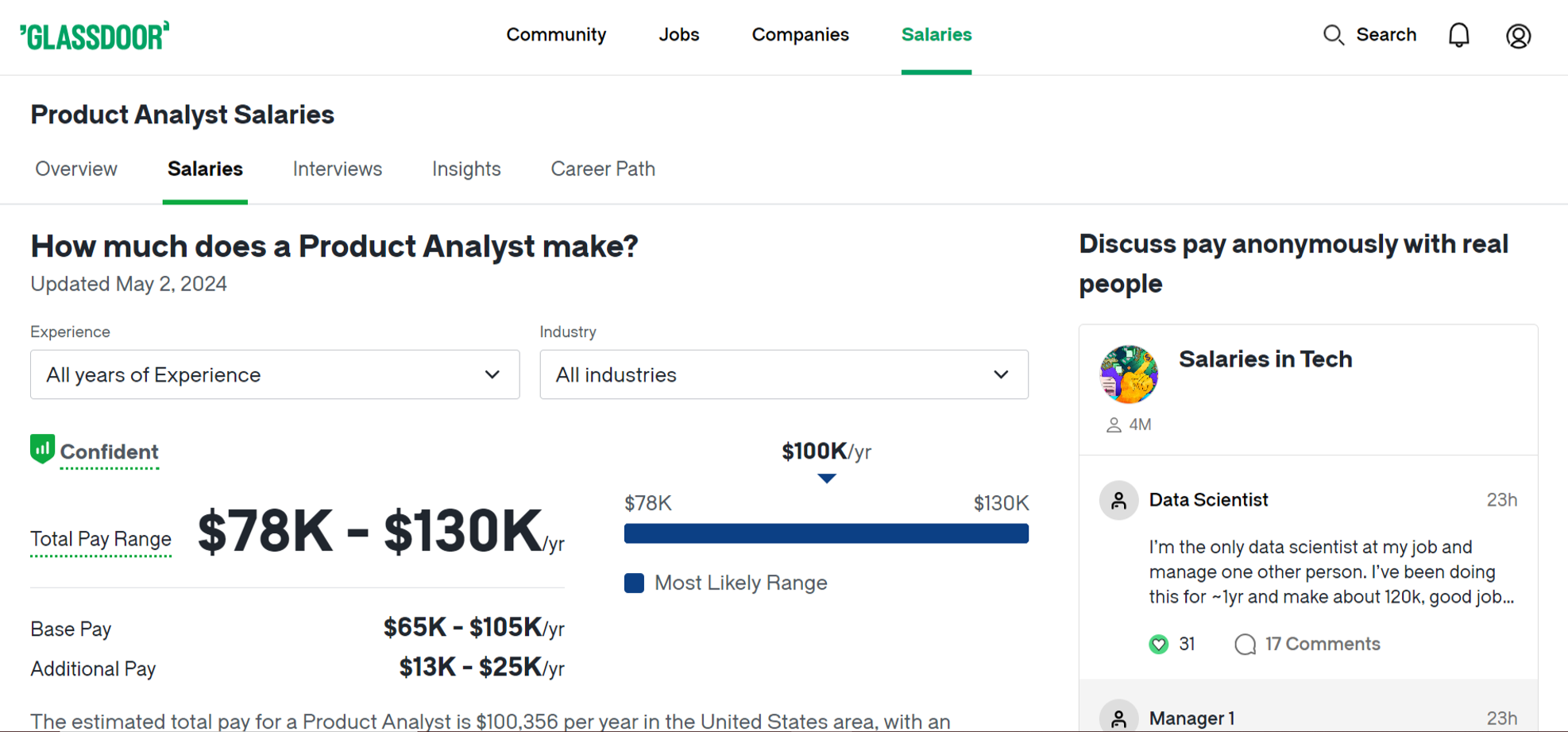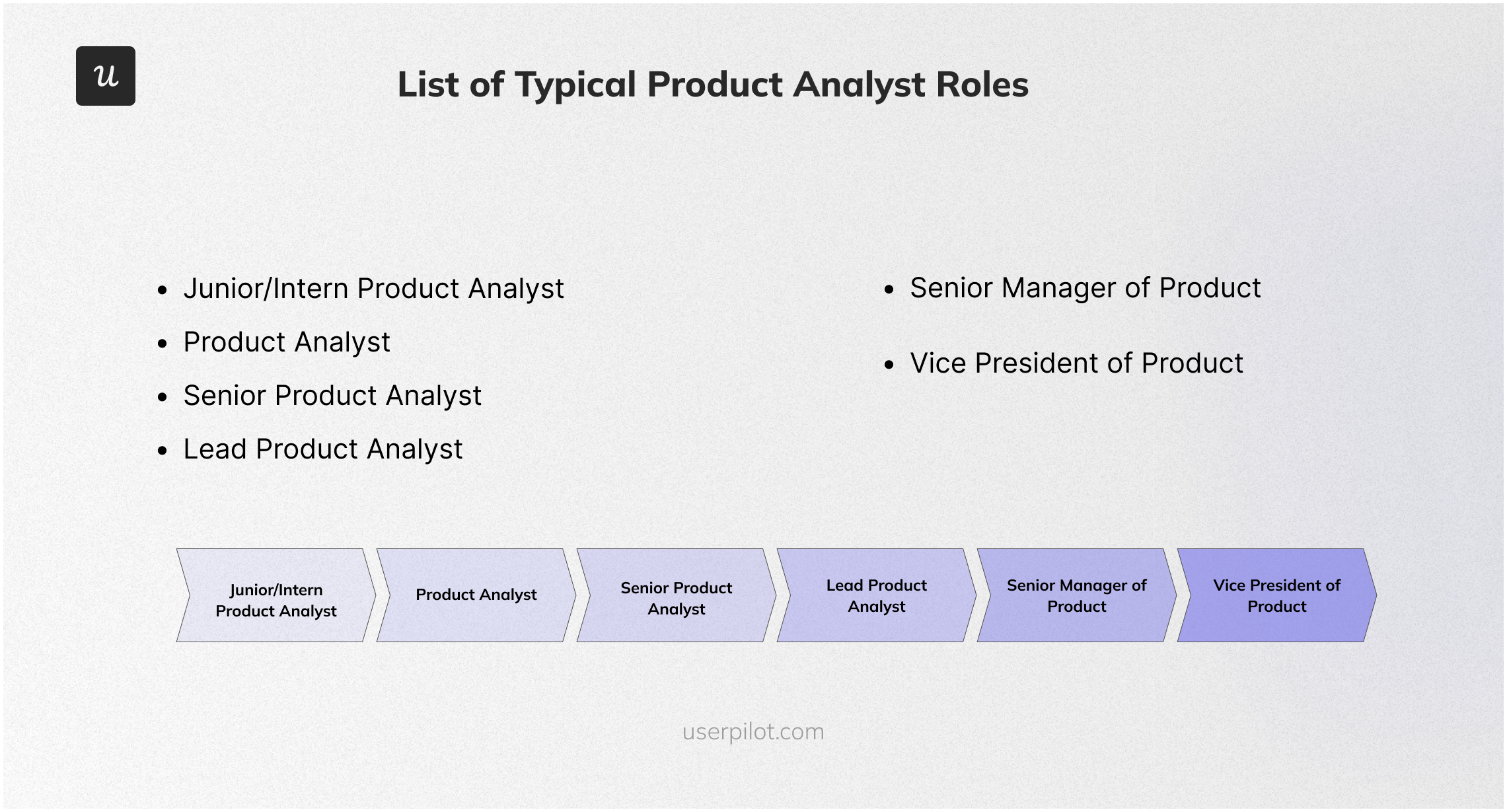
Try Userpilot Now
See Why 1,000+ Teams Choose Userpilot

What is a product analyst?
A product analyst is a professional who uses data to understand and improve product performance.
They are responsible for collecting, analyzing, and interpreting data about user behavior, product usage, and market trends. Product analysts work closely with product managers, engineers, and other stakeholders to provide insights that drive product development and decision-making.
Product analyst’s main role
When it comes to working on a product, the assumption is like shooting arrows into the dark, it will lead to a waste of effort and resources, hence the need for clear insights.
The product analyst provides clear and actionable insights to stakeholders about the product and enables them to make data-driven product decisions.
Here is a breakdown of what a product analyst does:
- Market research for trends identification: Conducts market research, gathers historical data, and identifies the trends and patterns that are pivotal in making the right product decisions.
- Collection of customer feedback: Gathers customer feedback via in-depth one-on-one interviews, surveys for a focus group, or even opinion polls.
- Data analysis: Once all the data has been collected, analyzes the data, interprets it, and makes product recommendations to stakeholders.
- Presentation of report findings to stakeholders: Based on the data obtained from the research and analysis, then presents their report to company stakeholders.
- Monitoring of Product Performance: After the product launch, monitors the product performance, and keeps track of product feedback from customers and industry/market trends that enable the company to make necessary changes when needed.
It is important to note that a product analyst is needed in every phase of the product lifecycle and is always relevant in the company.
Product analyst’s main responsibilities
The responsibility of a product analyst can be summed up as providing insights that drive accurate and data-driven decisions.
Here is a detailed breakdown of their responsibilities and duties:
- Carrying out adequate customer research and gathering data about the use to analyze customer behavior.
- Carrying out extensive market research to identify patterns and trends that serve as pointers for product strategies.
- Making inferences from data obtained and reporting it to stakeholders in a simple and visualizing way.
- Monitoring the product market performance and proposing necessary changes.
- Assist in developing the product roadmap, aligning it with company goals, market trends, and customer requirements.
- Collaborate with cross-functional teams, including engineering, marketing, sales, and customer support, to ensure successful product delivery and adoption.
- Monitor competitor products and strategies, identifying strengths, weaknesses, and opportunities for differentiation.
- Establish and maintain a structured feedback loop with customers, internal stakeholders, and other relevant parties to gather insights for continuous product improvement.
Product analyst salary
According to Glassdoor, the estimated total pay is $100,309 per year in the United States, with an average salary of $82,487 per year. There is an estimated additional pay of $17,821, depending on your position and where you are working.
One of the most important determinants of your salary is your level of experience.
To give you a more accurate insight, here is a breakdown:
- 0-1 years: $68K – $104K/year
- 1-3 years: $75K – $114K/year
- 4-6years: $82K – $131K/year
- 7-9 years: $87K – $143K/year
- 10-14 years: $97K – $161K/year
- 15+ years: $107K – $185K/year
Different industry sectors have different salary ranges, and the industries with the highest demand pay the highest. The top 3 paying industries are media and communication, information and technology, and pharmaceutical and biotechnology.
- Media and communication: $107,267/year
- Information Technology: $101,915/year
- Pharmaceutical and Biotechnology: $100,743/year
With the remote work structure, it is not uncommon to find companies offering location-based salaries. Here are the midpoint salaries for the following large cities in the United States, according to Glassdoor:
- San Francisco: $106,208/year
- New York: $93,239/year
- Boston: $85,844/year
- Washington: $91,928/year
- Chicago: $83,134/year
Product analyst career path
Here is the typical career path of a product analyst:
- Junior/Intern product analyst: The junior role is entry-level, where you get hands-on experience in product analysis. You are assigned tasks, and you assist seniors in user analysis and product research, among other functions. You also learn how to use product research tools.
- Product analyst: In this role, you perform functions like analyzing data, extracting insights, and preparing reports.
- Senior product analyst: Develops actionable insights and strategies based on the research and analysis results.
- Lead Product Analyst: A lead product manager leads the product analysis efforts and monitors the research, analysis, reporting, and strategy development.
- Senior Manager of Product: A senior manager of a product works closely with other product professionals, like product managers, to develop and implement product strategies obtained from product analysis.
- Vice President of Product: This is the highest role in the product analysis career, where you oversee all matters related to product analysis, development, and product lifecycle.
Best practices for being a great product analyst
Here are the top five best practices for being a great product analyst:
- Setting SMART goals and KPIs: The product analyst role ranges from research, analysis, and interfacing with other product professionals and stakeholders effectively. This creates the need to set goals that are specific, measurable, achievable, relevant, and time-bound to keep you in line and help you monitor your performance.
- Attention to detail: Must be able to spot a product trend by paying attention to details.
- User-centric mindset: Puts themselves in the shoes of the user in every stage of the product lifecycle.
- Ability to incorporate customer feedback: Incorporating customer feedback makes you develop and make appropriate iterations to your product for better customer retention.
- Getting skilled with product analysis tools: Getting proficient in product analysis tools like Userpilot is one factor that can give you an advantage and provide you with more accurate and specific insights.
FAQs
- Who can become a product analyst?
Anyone can become a product analyst by learning the necessary skills and experience. However, although it is not stringent, most recruiters add a degree in business, statistics, or economics to job requirements.
- What is the role of a product business analyst?
A product business analyst helps to ensure that the product is aligned with customer needs and, when needed, based on customer feedback, suggests possible product iterations for customer retention.
Conclusion
We hope this guide has provided you with valuable insights into the roles, responsibilities, and rewards associated with this role.
Looking into tools for product analysis? Userpilot is an all-in-one product platform with engagement features and powerful analytics capabilities. Book a demo to see it in action!









